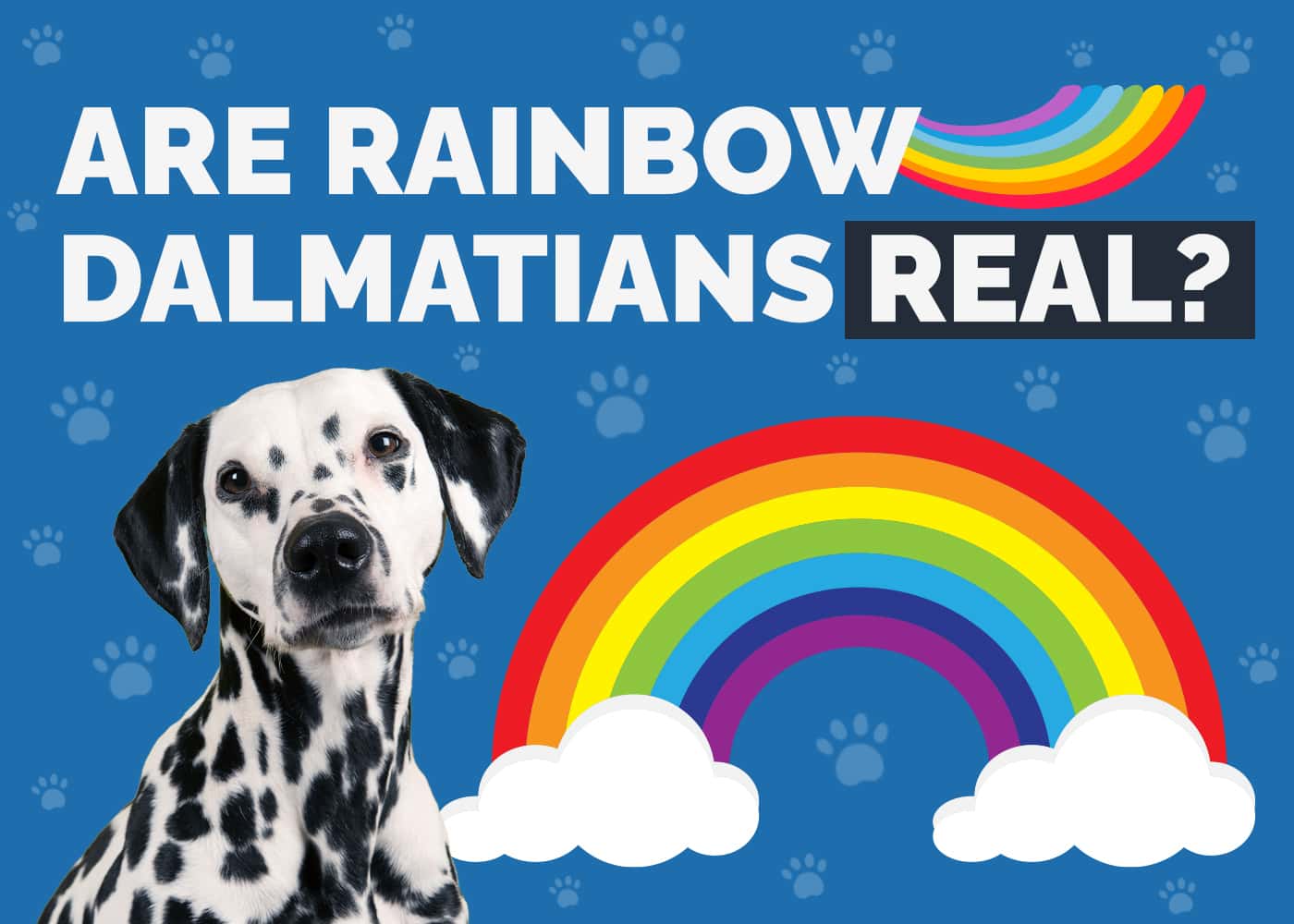Are Rainbow Dalmatians Real? The Truth Revealed
Updated on

If you frequent social media, you may have come across adorable Dalmatians who seem to have rainbow-colored spots all over their body. Unfortunately, rainbow Dalmatians are not a real breed. It’s really just a whimsical way to doll up your Dalmatian and maybe trick your friends. The origin of this “breed” is unclear, but we suspect it was cooked up by someone looking for social media credit.
Rainbow Dalmatians may just be wishful thinking, but that doesn’t mean the breed doesn’t have some unusual or rare colors! Whether you’re just curious or want one for yourself, we’ve put together some fascinating info on the rarest, most unusual Dalmatian colorings. Read on for more details.
The 4 Rare Dalmatian Colorings
Dalmatians are known for their classic white coat with black spots, but lots of people don’t realize that black and white are far from the only colors that Dals can inherit! Let’s check out some of the most unusual Dalmatian colorings you can find, and what makes them special.
1. Liver

Liver Dalmatians have light or chocolate brown spots instead of black ones, and they have brown noses to match. Unlike some other colorations, liver is considered acceptable under the official breed standards of the AKC, which recognize both black and brown spots on Dals.
2. Lemon

Lemon Dalmatians start life as an all-white puppies, and their trademark yellow or orange spots start to show up a few weeks later. Though the name implies yellow, many lemon Dalmatians have brownish spots that look sort of like human freckles. Lemon Dals are considered a totally separate coloring from the similar-looking golden and some liver Dalmatians.
3. Brindle

Sometimes lovingly called trindles, brindle Dalmatians are some of the rarest because they exhibit both black and brown spots. This coloring is controversial, with some people arguing that brindle Dalmatians are simply crossbred liver or lemon Dals.
4. Long-Haired

Yes, there are long-haired Dalmatians, but they’re extremely rare and technically considered a “fault” in the Dalmatian bloodline. Their fluffy, flowing fur is more grooming-intensive than the typical Dalmatian coat but can display all the same colors and spots.
Do Dalmatians With Rare Colorings Have Health Issues?
No, rare-colored Dalmatians like lemon or liver Dals don’t have any special health issues related to their coat. It’s vital to note that all Dalmatians, though, are more susceptible and prone to certain health conditions than other dog breeds. Let’s briefly check out some of those health problems below so you stay aware.
Dalmatian Health Issues:
- Deafness: Dalmatians have a partially white coat, which means they’re more likely to be born or develop deafness later in life.
- Dalmatian Bronzing Syndrome: This is an irritating skin condition that turns a Dalmatian’s skin pink or bronzish while causing skin lesions and hair loss.
- Bladder stones: Dalmatians are more likely to have a mutation that affects their urinary tract, producing painful bladder stones. This condition typically requires long-term treatment.
- Hypothyroidism: This somewhat common hormonal condition happens when your dog’s thyroid stops working properly, causing sudden weight gain, fatigue, loss of appetite, and more.

 Final Thoughts
Final Thoughts
Rainbow Dalmatians might just be a myth, but the breed does have a lot of really cool, unique colors, from light lemon to muddled brindle/trindle. The most notable health issue related to their coat is deafness, which is thought to be related to the same gene that gives them a white coat.











